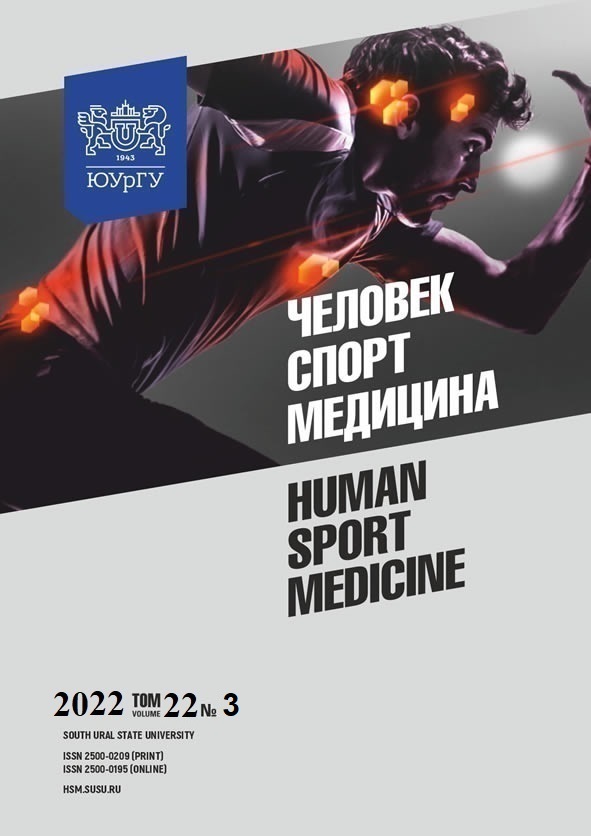RESEARCH OF LOCOMOTOR-RESPIRATORY COUPLING IN PHYSICAL EXERCISE
Abstract
Aim: the paper aims to identify the role of physical efforts in locomotor-respiratory coupling (LRC) during cyclic exercise. Materials and methods. The study involved 12 university students aged 19–20 years. The students performed squat and jumping on the spot exercises. These exercises were performed on the force platform. Ground reaction forces in the vertical direction (Fvert(t), N) were taken as an integral indicator of efforts. Airflow rate ( (t), l/s) measurements were performed using a helmet-mounted spirometer. The spirometer was connected to a universal data acquisition device, which was placed on the back of the subject. The signals were transmitted to the computer via Bluetooth. The (t) and Fvert(t) vibration frequencies were compared by Curve Fit. Results. The data obtained with Curve Fit were correct in 8 subjects. The graphs demonstrate that for these subjects the models of (t) and Fvert(t) frequencies coincided and were approximately equal under exercise. Conclusion. Cyclic efforts are the main factor of LRC during squat and jumping on the spot exercises. The frequency coincidence between airflow rate and effort data can be used as one of the criteria for an effective cyclic exercise.
References
References on translit
Copyright (c) 2022 Human. Sport. Medicine

This work is licensed under a Creative Commons Attribution-NonCommercial-NoDerivatives 4.0 International License.















